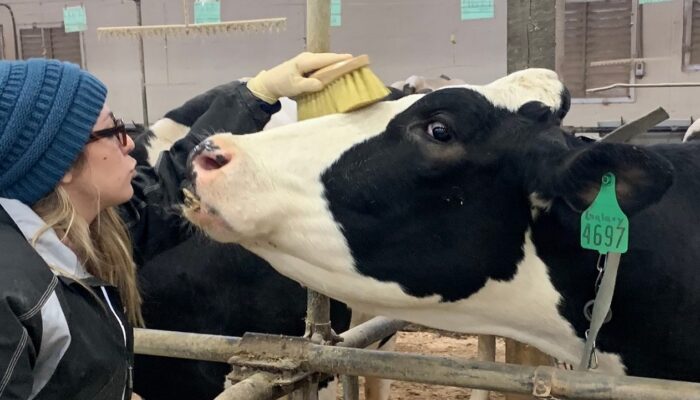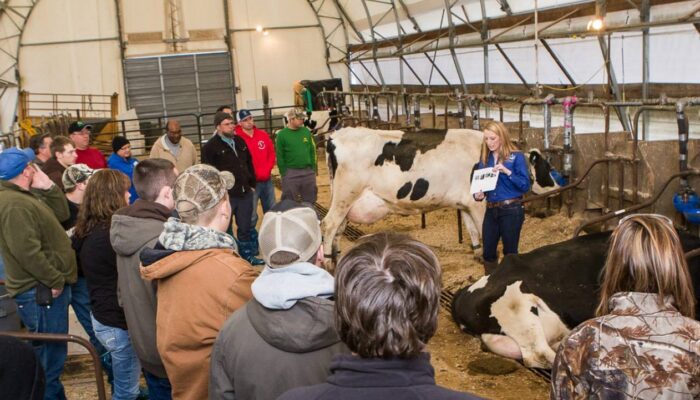Blue birds huddling together for warmth
pic.twitter.com/t0SEG4CZhs— Science girl (@gunsnrosesgirl3) December 27, 2024

Blue birds huddling together for warmth
pic.twitter.com/t0SEG4CZhs— Science girl (@gunsnrosesgirl3) December 27, 2024
President Donald Trump Initiates and Signs into Law $255 Permanent Annual Funding to HBCU’s
Wilberforce University is the first private Historically Black College and University (HBCU) in the U.S., founded in 1856 by the Methodist Episcopal Church, making it the first institution of higher learning founded, owned, and operated by African Americans. While not the absolute first HBCU overall (that distinction belongs to Lincoln University in Pennsylvania), Wilberforce was the first private one and holds the unique distinction as the first to graduate Black students with accredited bachelor’s degrees in 1857, preceding Lincoln.
🎬 #Wilberforce hosted filmmaker and #EmperiumStudios founder #DomCampbell on campus yesterday. #AWUWorld campus production team also had the opportunity to sit down with him for an exclusive interview! 🎥Be sure to follow A WU World on all social platforms. pic.twitter.com/xQuq8qyvsL
— Wilberforce Univ. (@wilberforce_u) January 15, 2026
§
Why is William Wilberforce often ignored in American history books?
William Wilberforce, the British MP who led the decades-long parliamentary campaign that resulted in the 1807 abolition of the British slave trade (and later full emancipation in 1833), is frequently overlooked in American history textbooks and education. We remind the education industry in the United States that the spark for ending slavery everywhere in the world originated with the Holy Trinity Church on Clapham Common in South London.
This omission stems primarily from national focus: U.S. history curricula emphasize domestic events and figures in the fight against American slavery. The narrative centers on the U.S. Constitution’s compromises, the Missouri Compromise, Harriet Tubman, Frederick Douglass, John Brown, and especially Abraham Lincoln and the Civil War. British abolition, while influential and inspirational to American abolitionists, is seen as foreign history.
Additionally, the American story is framed as a uniquely national struggle involving internal conflict, sectionalism, and civil war—rather than parliamentary reform led by an evangelical Christian in another country. Some historians note a broader “forgetfulness” about the transatlantic abolition movement after the Civil War, as America focused on reconciliation and downplayed slavery’s moral dimensions.
Wilberforce’s heroic role is sidelined because American education prioritizes homegrown heroes and the violent path to emancipation in the United States over Britain’s earlier, legislative success.
Related
University of Hull Wilberforce Institute
Key details:
Related:
2024 International Plumbing Code | ASPE Plumbing Design Handbook
| ASHRAE 188 Legionellosis: Risk Management for Building Water Systems
International Building Code Meeting minutes #67 2025-12-12
IEEE 602 (White Book) Recommended Practice for Electric Systems in Health Care Facilities
The new 820-bed inpatient tower at The Ohio State University Wexner Medical Center (known as University Hospital) opened in February 2026 and represents the largest single-facility project in the university’s history, with a focus on patient-centered care, advanced technology, and sustainability.
Based on available project details, there were no reported major electrical problems or disruptions during construction or activation that hindered progress—in fact, electrical systems were tested successfully with no operational challenges noted during key milestones like the activation of exterior lighting. Instead, several noteworthy electrical and technology-related features and innovations have contributed to the project’s overall success, particularly in enhancing energy efficiency, patient experience, and operational performance.
The hospital’s design emphasizes sustainable electrical systems, earning it a green bond designation for its bonds and a sustainability award from the Ohio Facilities Construction Commission early in the project. Key aspects include:
These elements not only promote eco-friendly operations but also position the hospital as a model for future healthcare facilities, with designs that conserve energy and adapt to evolving needs.
Electrical infrastructure supports cutting-edge features that improve clinical outcomes and user experience:
These electrical-enabled innovations have helped the project stay ahead of schedule (reaching substantial completion in late 2025) and under budget in key areas, contributing to its acclaim as a forward-thinking facility that elevates care for Ohio’s growing population. No significant electrical setbacks were publicly documented, unlike a brief structural pause in 2022 for a cracked concrete column (unrelated to electrical systems). Overall, the seamless integration of efficient, reliable electrical systems has been a key factor in the hospital’s successful launch and its role in advancing healthcare innovation.
“In the Barber Shop” by Ilya Bolotowsky (1934)
Painted for the Public Works of Art Project during the Great Depression
~3700 artists, ~15,000 paintingshttps://t.co/4DfkXSBB84https://t.co/Z1aqoY1zhW pic.twitter.com/qNDCEThOlD— Standards Michigan (@StandardsMich) March 15, 2025
Rebecca graduated from the University of Montevallo in 1984 and enjoyed a lengthy and distinguished career as a virtuoso actress, concert soloist and recording artist.
To honor her memory following her passing in 2020 the University has named the stage of the Center for the Arts in her honor.
“All the Things You Are” 1939 | Jerome Kern
print(“American Standard”)https://t.co/b5Ggh4RKvIhttps://t.co/cRIFjNxrFL pic.twitter.com/8oVxHovFR6— Standards Michigan (@StandardsMich) December 31, 2023
New York University Facilities Management
Washing in the Outer Hebrides 🎶 pic.twitter.com/3WbpVpviyg
— Fraser. (@frasercontra) August 10, 2023
![]()
Today we break down the catalog for food safety in education communities; with primary attention to consultations from private standard developing organizations and federal agencies charged with food safety. We do so with sensitivity to animals and plants and sustainability of the global food supply chain. Many schools are the communal cafeterias for the communities that own and operate them and run at commercial scale.
We prepare responses to public consultations released by standards developing organizations which, in many cases, have significant conformance enterprises.
ANSI Standards Action | Current Weekly Edition
Note the call for public comment on proposed WTO Agriculture, Sanitary and Phytosanitary (SPS) measures (Page 48)
Core titles are published by the ANSI accredited organizations listed below:
The ASHRAE catalog is the most cross-cutting and fastest moving catalog in the land. If you claim ownership of the United States energy domain you pretty much capture everything related campus safety and sustainability. Best to deal with it on a day-by-day basis as we usually do according to daily topics shown on our CALENDAR.
Association for Packaging and Processing Technologies
American Society of Agricultural and Biological Engineers
Institute of Electrical and Electronic Engineers
National Electrical Safety Code (Our particular interest lies in the safety and reliability of off-campus agricultural and research facilities that receive power from regulated utilities)
Kitchen Safety and Security System for Children
TupperwareEarth: Bringing Intelligent User Assistance to the “Internet of Kitchen Things”
Designing an IoT based Kitchen Monitoring and Automation System for Gas and Fire Detection
Re-Inventing the Food Supply Chain with IoT: A Data-Driven Solution to Reduce Food Loss
International Code Council
International Building Code Assembly Group A-2
International Building Code Group U Section 312 Agricultural Buildings
International Building Code Moderate Hazard Factory Industrial Group F-1 (Food Processing)
National Fire Protection Association
National Electrical Code Article 210 (Branch Circuits)
National Electrical Code Article 547 (Agricultural Buildings)
Standard for the Installation of Air-Conditioning and Ventilating Systems
Public Input Report for the 2024 Revision
Standard for Ventilation Control and Fire Protection of Commercial Cooking Operations
Public Input Report for the 2024 Revision
Food Equipment
Commercial Warewashing Equipment
Commercial Refrigerators and Freezers
Commercial Cooking, Rethermalization and Powered Hot Food Holding and Transport Equipment
Commercial Powered Food Preparation Equipment
US Federal Government:
US Department of Agriculture
Food & Drug Administration (HACCP)
State Governments:
Lorem ipsum @StandardsState
Global:
International Organization for Standardization
International Electrotechnical Commission
Codex Alimentarius
Food safety and sustainability standards populate are of the largest domains we track so if we need a break0-out session, let’s do it. Use the login credentials at the upper right of our home page.
More
Standards supporting vertical farming
STANDARDS SUPPORT SOPHISTICATED FARMING METHODS THAT BRING PRODUCE TO YOUR TABLE
US Food & Drug Administration: Food Facility Registration Statistics (as of January 11, 2021)
National Grange of the Order of Patrons of Husbandry
The U.S. Land-Grant University System: An Overview
American Society of Agricultural and Biological Engineers Standards Development
The origin of the Land grant act of 1862
International Electrotechnical Commission: Keeping food safe from farm to plate
Council for the Advancement of Standards in Higher Education: Dining Services Programs
Science and Our Food Supply: A Teacher’s Guide for High School Classrooms
Many land grant colleges and universities are stewards of agricultural facilities that require reliable electrical power that is safe and sustainable for livestock well off the core campus distribution grid. Today we examine the 2026 National Electrical Code safe electric service rules with an eye toward the close date of April 6th for public input on the 2029 NEC.
Updated: September 3, 2024
Article 547: Agricultural Buildings
Public Input with Responses from CMP-7 (Start at PDF Page 187)










Many land grant colleges and universities are stewards of agricultural facilities that require reliable electrical power that is safe and sustainable for livestock and animal habitat for sporting.
FREE ACCESS: 2023 National Electrical Code
The premise wiring rules for hazardous university owned buildings have been relatively stable. Electrical professionals are guided by:
Public response to the First Draft of the 2026 National Electrical Code will be received until August 28, 2024. We coordinate our approach to the entire NFPA electrical suite with the IEEE Education & Healthcare Facilities Committee which meets 4 times monthly. We typically refer to previous transcripts of technical committee actions to inform any changes (improvements) that we propose, if any.
We maintain this issue on the standing agenda of our Power and Nourriture (Food) colloquia. Feel free to join us with the login credentials at the upper right of our home page.
More:
Cornell University Agricultural Safety and Health Program
National Safety Council (22 deaths by electrocution on farms per 100,000 in 2017)
National Agricultural Safety Database
Electrical Wiring for Barns, Riding Arenas, Animal Habitat and Feed Storage
New update alert! The 2022 update to the Trademark Assignment Dataset is now available online. Find 1.29 million trademark assignments, involving 2.28 million unique trademark properties issued by the USPTO between March 1952 and January 2023: https://t.co/njrDAbSpwB pic.twitter.com/GkAXrHoQ9T
— USPTO (@uspto) July 13, 2023
Standards Michigan Group, LLC
2723 South State Street | Suite 150
Ann Arbor, MI 48104 USA
888-746-3670
